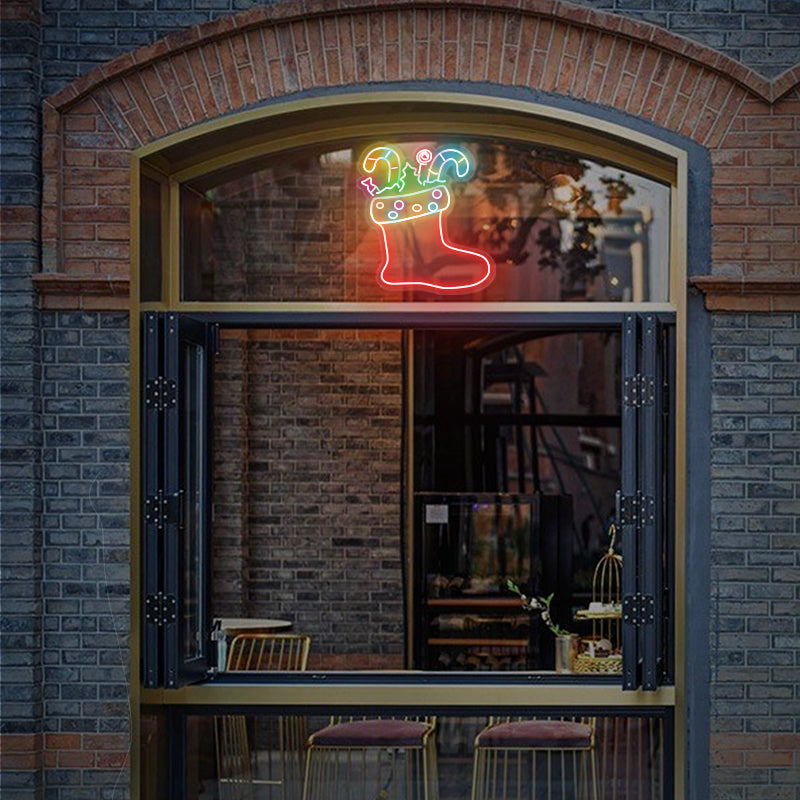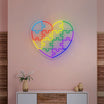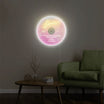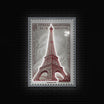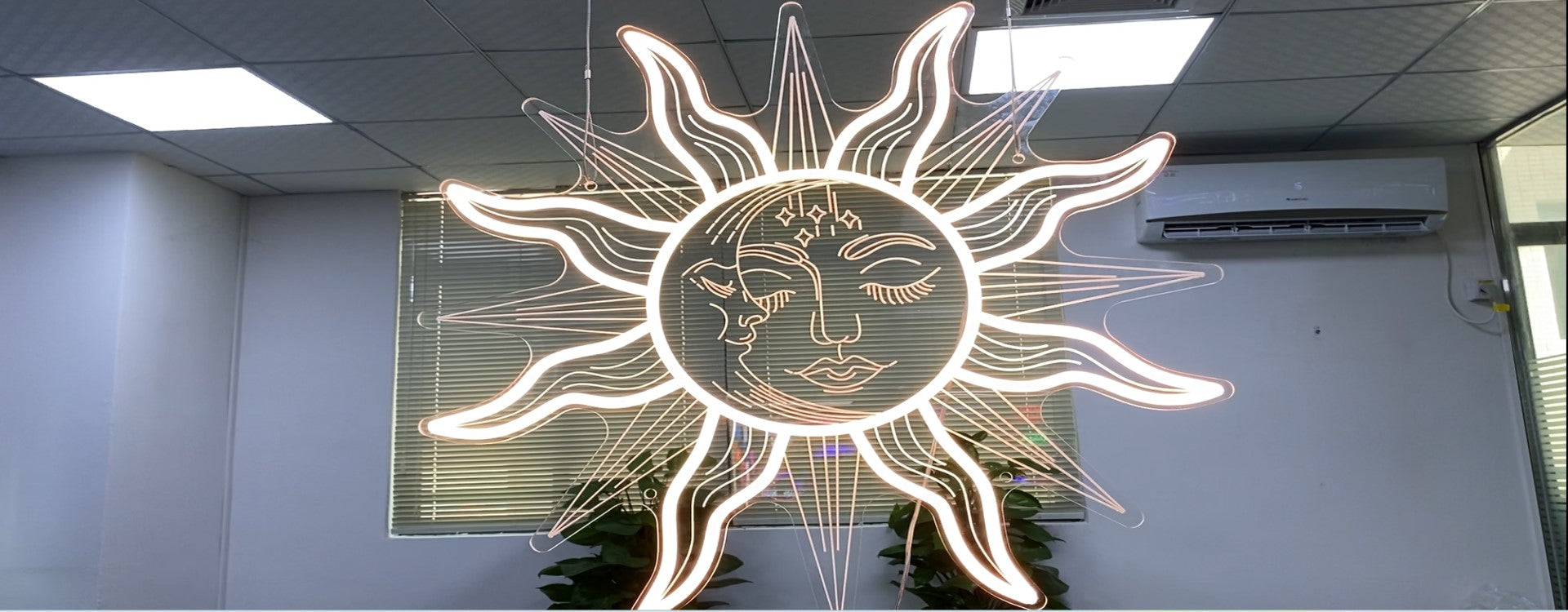Does the luminosity of neon signage pose a genuine peril? For epochs, neon signs, with their resplendent hues and mesmerizing luminescence, have ensnared the attention of commercial enterprises and promotion aficionados alike. Notwithstanding their allure, murmurs and disquiets have emerged about the underlying menaces tethered to these gleaming beacons - from the specter of conflagrations to jolting electrical misadventures, and even trepidations linked to the inhalation of vapors from the very gases that grant them life. Delve with us, as we embark on an odyssey, unraveling the veiled threats of neon signage whilst shedding light on the fortified bulwarks established to shield the populace and attenuate these lurking menaces.
Understanding the Luminous Magic: The Mechanism Behind Neon Signs
Diving into the realm of neon signs, let's dissect their inner workings. Neon signs are intricate assemblies of glass conduits brimming with either neon or argon gases. Introduce an electric surge to this gas-filled tube, and a fascinating phenomenon unfolds. The atoms within the gas get invigorated, undergoing a state of excitement, which subsequently compels them to emit radiant energy, manifesting as visible light. This captivating transformation, borne from electrical discharge, is the very essence of the alluring neon luminescence.
The hue emanated by these signs isn't arbitrary but is intimately tied to the specific gas introduced. The classic neon gas is responsible for that iconic, fiery reddish-orange illumination. In contrast, argon exudes a serene pale blue luminescence. Venturing beyond these basic colors, by intertwining various gases and employing diverse glass tubing shades, artisans of this craft can concoct an expansive spectrum of colors, painting the nightscape with their luminous artistry.
Beyond just gases and electrical currents, the craftsmanship of neon signs dives deeper. The glass tubes integral to these signs demand meticulous bending and molding to translate into the envisioned designs and alphabets. Leveraging bespoke instruments and nuanced methodologies, this shaping process is no child's play. It's a testament to the artisan's adeptness and exactitude. Such intricate workmanship underscores the premium nature of neon signs, justifying the often hefty price tag associated with their creation.
Neon Signs: Probing the Hazards of Gaseous Emanations and Chemical Interactions
One looming concern tied to neon signs centers on the potential gaseous exposure emanating from their composition. While neon and argon stand as inert gases, generally tagged as benign, their escalated concentrations could morph into potential health adversities. Encountering elevated doses of these gases might precipitate suffocation and allied pulmonary complications. Nonetheless, this encumbrance remains relatively subdued, attributed to the intricate design of neon signs that largely barricade voluminous gas dispersions.
The very constitution of neon signs ensures that neon and argon remain securely encased within their glass sanctuaries. Only trifling amounts make their escape during electrical inductions, thus rendering the chances of substantial gas exposure quite tenuous, provided the signs witness appropriate use and consistent upkeep.
Beyond just structural design safeguards, there's a network of regulatory bulwarks at play. Sector-specific standards, coupled with overarching governmental directives, prescribe a rigorous framework governing the birth, installation, and stewardship of neon signs. This matrix of guidelines is meticulously crafted to fortify user safety and shield the collective public from any undue harm.
Can neon signs cause electric shock?
Neon signs use electricity to operate, but they are designed in a way that prevents electric shock. For example, the glass tubes of neon signs are made of non-conductive materials and are sealed, so there is no way for anyone to come into contact with the electric current. Additionally, neon signs typically have a transformer that reduces the voltage of the electricity to a safe level.
Just like traditional neon signs, LED neon signs do not pose a risk of electric shock. The LED lights used in these signs are low voltage and are sealed in a non-conductive material, so there is no way for anyone to come into contact with the electric current.
This means that neon signs are safe to use and do not pose a risk of electric shock. So, if you’re thinking about adding a neon sign to your home or business, you can confidently do so. Not only will it add a touch of character and charm, but you can rest assured that it is safe to use.
Neon Signs: Navigating the Fragility of Glass and the Menace of Precarious Mountings
Beyond the electric luminance and potential health implications, neon signs carry their own set of intrinsic challenges. Within this discourse, we shall delve into the conceivable hazards posed by fractured glass and the threat of plummeting displays, while also elucidating prudent strategies to mitigate such contingencies.
Foremost among the risks is the specter of shattered glass. Crafted from intricately molded glass tubes, neon signs, despite their durable design, remain vulnerable to breaches under undue strain or mishandling. A fractured neon sign isn't merely a loss of an art piece; it becomes a veritable bed of razor-edged fragments, poised to inflict lacerations and wounds.
The antidote to such mishaps lies in adherence to guidelines. By heeding the manufacturer's counsel on installation and maintenance, employing the right toolkit for the job, and ensuring that these luminous masterpieces are anchored steadfastly, one can drastically curtail the odds of breakage. Vigilance, too, plays its part – resisting the urge to burden these signs or expose them to elements that might compromise their integrity, such as turbulent winds, can go a long way.
Beyond the glass, there's the lurking danger of unstable mountings leading to tumbling signs. An inadequately anchored sign isn't just a risk to itself, but a potential menace to surrounding assets. A cascading sign, especially from a considerable elevation, metamorphoses into a hefty projectile, with a capacity to wreak havoc on anything in its descent path.
In essence, while neon signs are an exquisite amalgamation of art and science, they warrant judicious care and circumspect handling to ensure their beauty doesn't inadvertently morph into a hazard.
Neon Signs and the Rarity of Fiery Mishaps: An Insight
While neon signs, with their vibrant luminescence, captivate many, concerns about their flammability may arise. Indeed, neon signs possess the potential to kindle a blaze, albeit such occurrences are few and far between. These signs harness the luminous dance of electrified neon gas, meticulously encased within glass sanctuaries. For a conflagration to be birthed from such an apparatus, the confined gas must breach its chamber and encounter an incendiary element, be it a mere spark or a naked flame.
Several culprits can facilitate this untimely escape of gas. Foremost among them is the affliction of the sign's very vessel – the glass tube. Should it suffer fissures or outright shattering, the imprisoned neon gas finds an avenue to the external world, with the potential of igniting upon contact with combustible entities. Moreover, a lax installation or subpar upkeep can also betray the sign's integrity. A neon beacon, when improperly anchored or exhibiting slackened electrical junctions, may inadvertently become a conduit for gas leakage.
To ward off the specter of fiery incidents, a proactive approach is paramount. Regular perusals for any telltale signs of wear, tear, or damage go a long way. Should any anomalies emerge, swift rectification or replacement is advisable. Additionally, a safety-first mindset dictates that the vicinity of the neon sign remains devoid of fire-prone materials, and the sign itself remains insulated from extremities, be it in temperature or external adversities. Adhering to these tenets not only ensures the longevity of these luminous wonders but also fortifies them against becoming inadvertent fire hazards.
Safety Measures for Neon Signs: A Comprehensive Guide
1. Adherence to Manufacturer Protocols:
Ensuring safety around neon signs begins with adhering to the manufacturer's guidelines. These directives, curated from extensive expertise, will guide users in the proper installation, operation, and maintenance of the signs, mitigating any potential hazards.
2. Employ the Right Tools for Glass Manipulation:
The art of shaping the glass tubes of neon signs demands specialized tools. Utilizing the appropriate equipment and techniques can avert potential damages and risks, ensuring the integrity of the glass and the safety of the artisan.
3. Resist the Urge to Tinker:
Given the fragility of neon signs, it's imperative to refrain from unnecessary meddling or misuse. Such actions might exert undue force or stress on the sign, leading to breakage, and consequent risks like injury from glass shards.
4. Secure Mounting is Key:
Employ the recommended hardware and strategies to anchor neon signs firmly to sturdy surfaces. A well-mounted sign drastically reduces the likelihood of it toppling over, safeguarding both people and property.
5. Regular Oversight and Upkeep:
A routine inspection and maintenance regime can preempt many hazards. This involves examining the glass structure, electrical constituents, and running periodic tests to check the functionality and gas integrity of the sign.
6. Prioritize Child Safety:
Children, out of curiosity, might venture close to neon signs. Due to the high voltage and fragile nature of these signs, it's paramount to ensure they remain out of children's reach, preventing both electric shocks and potential damage.
7. Avoid Electrical Overburden:
Power sockets have their capacity limits. Overloading them can herald overheating issues and even fires. It's crucial to match the electrical ratings of the socket with the devices plugged in. Relying excessively on power strips or extension cords should be avoided, as they amplify the risk of overloading.
8. Maintain a Safe Distance from Water:
Water and electricity are a perilous combination. Since neon signs operate on high voltage, placing them proximate to water sources could escalate the risk of electric shocks. Water ingress can also compromise the sign's components. Thus, positioning neon signs away from moisture and water sources is a pivotal safety measure.
9. Distance from Combustible Materials is Crucial:
Safety and neon signs necessitate distance from any materials that have a propensity to catch fire. Given that neon signs use electrified gas, in rare circumstances, a breach in the glass or an anomaly could bring the gas in proximity to flammable items like paper or fabrics, instigating a fire hazard. To mitigate such possibilities:
- Keep the vicinity of the neon sign decluttered.
- Do not position the sign close to heat sources, such as stoves, open flames, or radiators.
- Regularly inspect the sign for any damages that might expose the gas.
- Ensuring these measures can effectively safeguard both the premises and the neon sign against any fire threat.
10. Maintain Vigilance During Operation:
Staying secure around neon signs isn't just about the installation or positioning but also encompasses awareness during its usage. Being cognizant of the potential risks, like electric anomalies or gas exposure, can lead to timely preventive action. Here are some steps to ensure this:
Frequently inspect the sign for any signs of wear, tear, or damage.
Ensure the power connections remain tight and not frayed.
Avoid touching or adjusting the sign when it’s on, especially with wet hands.
In case of any unusual occurrences (like flickering, buzzing, or odor), switch off the sign and consult a professional.
Understanding these potential risks and adopting these safety protocols can guarantee a safe environment around neon signs, allowing users to revel in their luminous appeal without compromising on safety.
Emergency Solutions for Neon Signs: An Essential Guide
11. Addressing Neon Sign Gas Poisoning:
Neon gas, under typical conditions, is inert and not toxic. However, in the rare event of excessive exposure due to an unlikely scenario like a massive neon tube breakage in a confined space:
Immediate Evacuation: Ensure that everyone moves out of the area where the neon sign broke. This will prevent further exposure to any gases.
Ensure Adequate Ventilation: Open windows and doors to allow fresh air to circulate, which can dissipate any released gas.
Seek Medical Help: If anyone shows symptoms of poisoning, which can include dizziness, headache, nausea, or difficulty in breathing, immediately contact emergency services or rush to the nearest medical facility.
Report the Incident: Inform the appropriate local authorities about the incident to ensure that necessary safety checks can be done.
12. Handling Electric Shocks from Neon Signs:
While neon signs are designed with safety in mind, in rare cases, electric shocks might occur due to faulty installations, wear and tear, or other reasons. If someone gets an electric shock from a neon sign:
Power Down: If safe to do so, immediately disconnect the neon sign from the power source. Always avoid direct contact with the person getting shocked until they are free from the electrical source.
Check Responsiveness: If the person is unconscious, check for a pulse and breathing. Begin CPR if necessary and get someone to call emergency services.
Burn Treatment: Mild burns can be treated with cool, not cold, running water. More severe burns require medical attention.
Avoid Moving Severely Injured Persons: Unless there are immediate dangers, like a fire, avoid moving the injured individual.
Medical Consultation: Even if the person seems fine after a shock, always consult a doctor. Internal injuries are not immediately apparent.
Post-Incident Check: Once the immediate emergency is dealt with, get a qualified electrician to inspect the neon sign and associated wiring. This will help identify and rectify the root cause of the shock.
13. Handling Fallen and Broken Neon Signs:
A neon sign, if not securely mounted or subjected to external pressures, can fall, leading to potential hazards. Here's what you should do if a neon sign falls and breaks:
- Power Disconnect: Immediately switch off the power to the neon sign. If possible, unplug it to ensure there's no electrical current flowing.
- Clear the Area: Ensure everyone stays away from the broken sign and any shattered glass to prevent injuries.
- Clean Up: Wearing safety gloves, carefully pick up and dispose of any broken glass. Using a broom, sweep up smaller fragments to ensure the area is completely clean.
- Assessment: If the sign seems repairable, consult with professionals to gauge the extent of the damage and if it's safe to reuse. If the damage is too severe, consider replacement.
- Safety Precautions: Reinforce other neon signs if necessary, ensuring they are securely mounted to avoid similar incidents in the future.
14. Addressing Fires and Burn Injuries from Neon Signs:
Though rare, neon signs can sometimes cause fires, especially if placed near flammable materials. Here's how to manage such a situation:
- Power Down: Switch off and unplug the neon sign immediately.
- Extinguish the Fire: Use an appropriate fire extinguisher to put out the fire. If you don't have one or the fire is too large, evacuate the area and call the fire department.
- Evacuation: If the fire spreads or is uncontrollable, ensure everyone's safety by evacuating the premises.
- Attend to Burns: If someone has sustained burns, run cool (not cold) water over the burn for 10 minutes or until the pain subsides. Protect the burn from further injury with a sterile non-stick bandage. For more severe burns, seek medical attention immediately.
- Investigation: After the situation is under control, ascertain the cause of the fire. This will help prevent future occurrences.
- Safety Review: After such an incident, it's crucial to review the placement and condition of all neon signs, ensuring they are far from flammable materials and in proper working condition.
Remember, while neon signs are a beautiful way to advertise or decorate, safety should always be paramount. Regular checks and proper placement can prevent most emergencies associated with these signs.
FQAS
Do neon signs get hot?
No, neon signs typically do not get very hot. While they do emit some warmth due to the electrical components, the neon gas inside the tubes produces light through a cold process called electrical discharge. The glass tubes that house the neon gas are generally cool to the touch when the sign is operational.
Are neon signs dangerous to touch?
While the glass tubes of a neon sign are safe to touch, one should exercise caution due to the high voltage that powers the sign. Touching broken or exposed parts of the wiring can lead to an electric shock. It's best to handle neon signs only when they are unplugged and to avoid any areas that look damaged or exposed.
Are neon signs fragile?
The glass tubes used in neon signs are delicate and can break upon impact. However, the metal frames and other components of the sign are typically robust. While neon signs can withstand daily wear and tear, they should be handled with care, especially during transport or installation, to prevent the tubes from breaking or the gas from leaking.
Do neon signs give off radiation?
No, neon signs do not emit radiation. They function through a process known as fluorescent lighting. This involves using electricity to excite inert gases contained within the tubes, producing a glow. There is no nuclear reaction or radioactive material involved, so there's no radiation emitted.
Can neon lights hurt your eyes?
Yes, staring directly at neon lights, especially for prolonged periods, can be harmful to the eyes. As with any bright light source, prolonged exposure can lead to eye strain or discomfort. It's advisable to avoid direct and extended gazing at neon lights, and if you're in an environment with neon lighting, it's a good idea to take breaks and not position the lights directly in your line of sight.
Can neon signs explode?
Neon signs themselves are not inherently explosive. However, if the sign is improperly manufactured or maintained, and the contained gas leaks out and comes into contact with an ignition source, there could be a risk of a small ignition. It's also important to note that the amount of gas in these signs is minimal, so any ignition would likely be minor. Regular maintenance and proper handling reduce the already minimal risks associated with neon signs.
Is it safe to put neon signs outdoors?
Yes, many neon signs are designed to be used outdoors. However, there are certain precautions to keep in mind. An outdoor neon sign should be properly constructed with materials that can withstand the elements, such as rain, sun, and wind. The sign's electrical components should be appropriately insulated and protected against moisture. Additionally, the use of protective coverings or casings can further shield the neon sign from the weather and potential damage. Regular maintenance and inspections are crucial to ensure that the sign remains safe and operational. If you're considering installing a neon sign outdoors, consult with professionals to ensure it's suited for that environment.
Do I need a fireman’s switch for neon signs installations?
The need for a fireman’s switch, a device that allows emergency services to quickly disconnect electrical power to a sign, largely depends on local regulations and the location of the installation. In industrial settings, the presence of many electrical devices and potential hazards often makes it a requirement to have such a switch for larger electrical installations, including big neon signs. However, for smaller signs in residential, retail, or office settings, the necessity for a fireman's switch is less common. Always consult local building codes and electrical regulations to determine the specific requirements for your area. It's also a good idea to work with qualified electricians and installation professionals who are familiar with these guidelines.
Conclusions
Neon signs, with their captivating glow and unique design, have long been a favorite for businesses and enthusiasts alike. Their beauty, however, comes with a set of potential hazards. But like many things, with knowledge and a proactive approach, these risks can be minimized or even eliminated.
- Safety First: By adhering to safety guidelines, understanding the mechanics, and ensuring regular maintenance, users can significantly reduce the risks associated with neon signs. This includes following manufacturer’s instructions, using correct installation and maintenance techniques, and keeping the signs away from children, water, and combustible materials.
- Emergency Preparedness: Knowing what to do in emergencies, like gas leaks or electrical malfunctions, can prevent further harm. It’s not just about having the right equipment but also having the knowledge and presence of mind to act quickly and effectively.
- Regulations and Professional Consultation: It’s always beneficial to be aware of local regulations concerning neon signs, especially when it comes to outdoor installations or specific safety equipment like a fireman’s switch. Consulting with professionals can help ensure that your neon sign installation meets safety standards and operates efficiently.
- Awareness is Key: The best way to prevent any hazards is to be informed. Understand the product, its features, potential risks, and the measures to counteract those risks.
In conclusion, neon signs, when treated with the respect and care they deserve, can be both safe and mesmerizing. As with many things, knowledge is the first step to safety. Share this knowledge, spread awareness, and let the vibrant colors of neon continue to illuminate our spaces safely. If you found this information valuable, please do share it with friends and associates to promote safety and awareness around neon signs.



